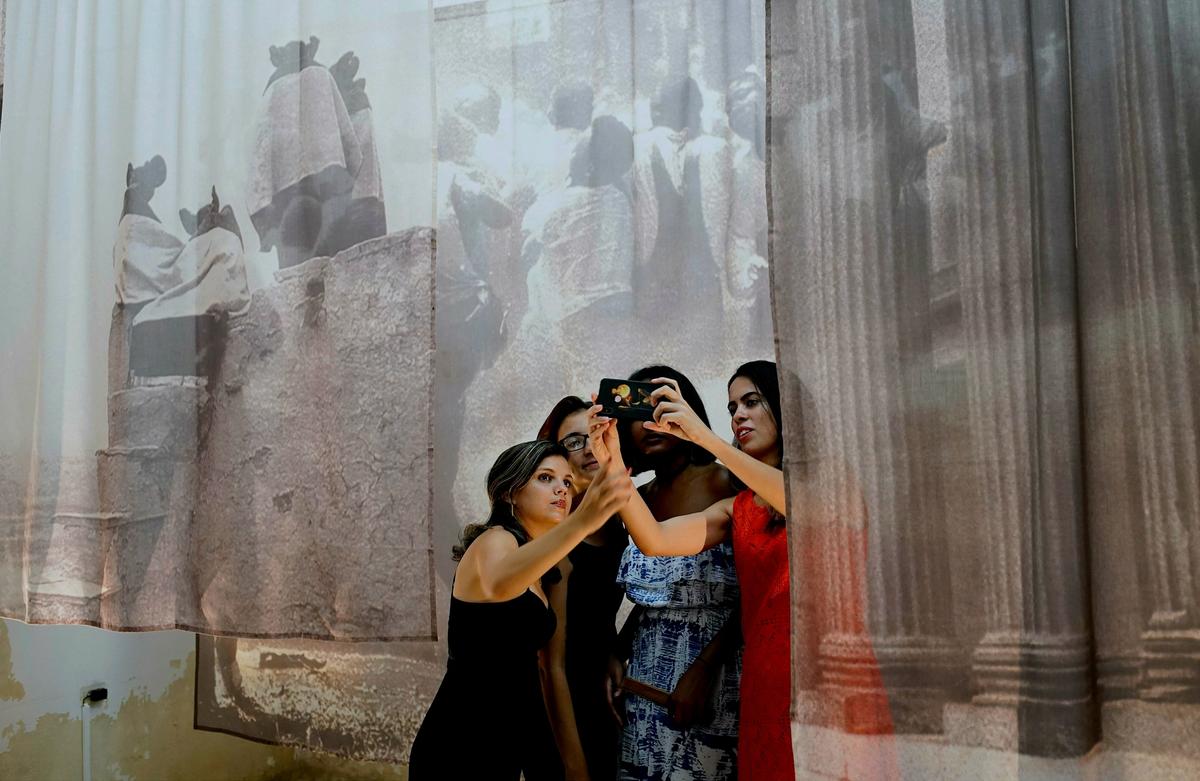In 1972, at Documenta 5 in Kassel, Germany, Joseph Beuys declared that: “every man is an artist.” In Cuba, during the 2019 Havana Biennial, government officials have taken it upon themselves to decide who is and is not an artist on the island. Those who are, according to the authorities, enjoy the benefits of state-sanctioned exhibitions, like the biennial. Those who are not, among them artists fighting Decree 349—a despotic new law that criminalises the existence of independent artists—suffer vastly different treatment: namely, an escalating campaign of harassment, detention and imprisonment courtesy of the Cuban government.
On 11 April, a day before the biennial’s opening, I visited the artist and activist Luis Manuel Otero Alcántara at his home and studio in the San Isidro neighborhood of Old Havana. He told me about his plans to stage a fashion show and performance on Calle Damas that echoed the 2017 action of Daniel Llorente, an everyday Cuban who—clad in a national flag tee and wearing the Stars and Stripes for a cape—field-crashed the first May Day parade after Cuba and the US normalised diplomatic relations. The project was low-key, even homey by American standards, but Cuban officials spotted anti-Communist subversion where others saw a block party. An hour later, Alcántara and two neighbors were under arrest by Cuban police. It was the artist’s second detention in as many weeks.
Building on an existing body of already onerous laws and regulations, Decree 349 is the cruelest effort to date by Cuban officials to regulate culture and control a new generation of independent and globally connected artists
Alcántara and others opposed to Decree 349 —including the artists Tania Bruguera, Amaury Pacheco, Michel Matos, the art historian Yannelis Núñez Leyva, the poet and art writer Katherine Bisquet and the Cuban-American artist and writer Coco Fusco—have been subject to government intimidation, threats, arrest and expulsion leading up to and during the biennial. Leyva recently escaped political persecution by taking up residence in Madrid; Bisquet has been consistently harassed by Cuba’s State Security since February; Fusco was denied entry into the country on 10 April (no official reason was given); Pacheco and Matos were arrested and interrogated, respectively, on 12 and 16 April; Bruguera, who has been detained and interrogated too many times to count, recently used her Facebook account to denounce the mistreatment of a relative by Cuban officials. Police hounded her elderly uncle, she says, for clues to her biennial plans.
Building on an existing body of already onerous laws and regulations, Decree 349 is the cruelest effort to date by Cuban officials to regulate culture and control a new generation of independent and globally connected artists. Called “an intolerable affront to free expression” by PEN America and “dystopian” by Amnesty International, the decree prohibits all artists, including collectives, musicians and performers, from operating in public or private spaces without prior approval by the Ministry of Culture. Individuals or businesses that hire artists without authorisation can be sanctioned, and artists that work independently can be fined and have their artwork or materials confiscated—an even worse fate in a country crippled by chronic shortages.
Under the new decree, the authorities have the power to suspend or cancel a performance unilaterally, and decisions can be appealed only before the Ministry of Culture. That perfect Catch-22 is magnified by vague bans on the following offenses: “the use of patriotic symbols that contravene current legislation”, “sexist, vulgar or obscene language”, and “any other (content) that violates the legal provisions that regulate the normal development of our society in cultural matters”. Decree 349 also establishes the role of the “art inspector” to interpret its purposefully muddy language. One de facto inspector, Norma Rodriguez, the head of Cuba’s National Council of Visual Arts, said the following when asked by Reuter’s about Alcántara’s most recent arrest (the third this month): “He’s an activist, not an artist.” Those words should send a chill down the spine of anyone who understands the protection art’s social and cultural value has afforded artists (and activists) over the centuries.
Meanwhile the mojitos and daiquiris slosh on during what, to many, is the least challenging, most milquetoast Havana Biennial in history. Art fares poorly when parroting official narratives, especially when that messaging is opposed to the values of free speech and an open society. Those principles are represented today not by the Havana Biennial, but by independent artists in Cuba and around the world.


